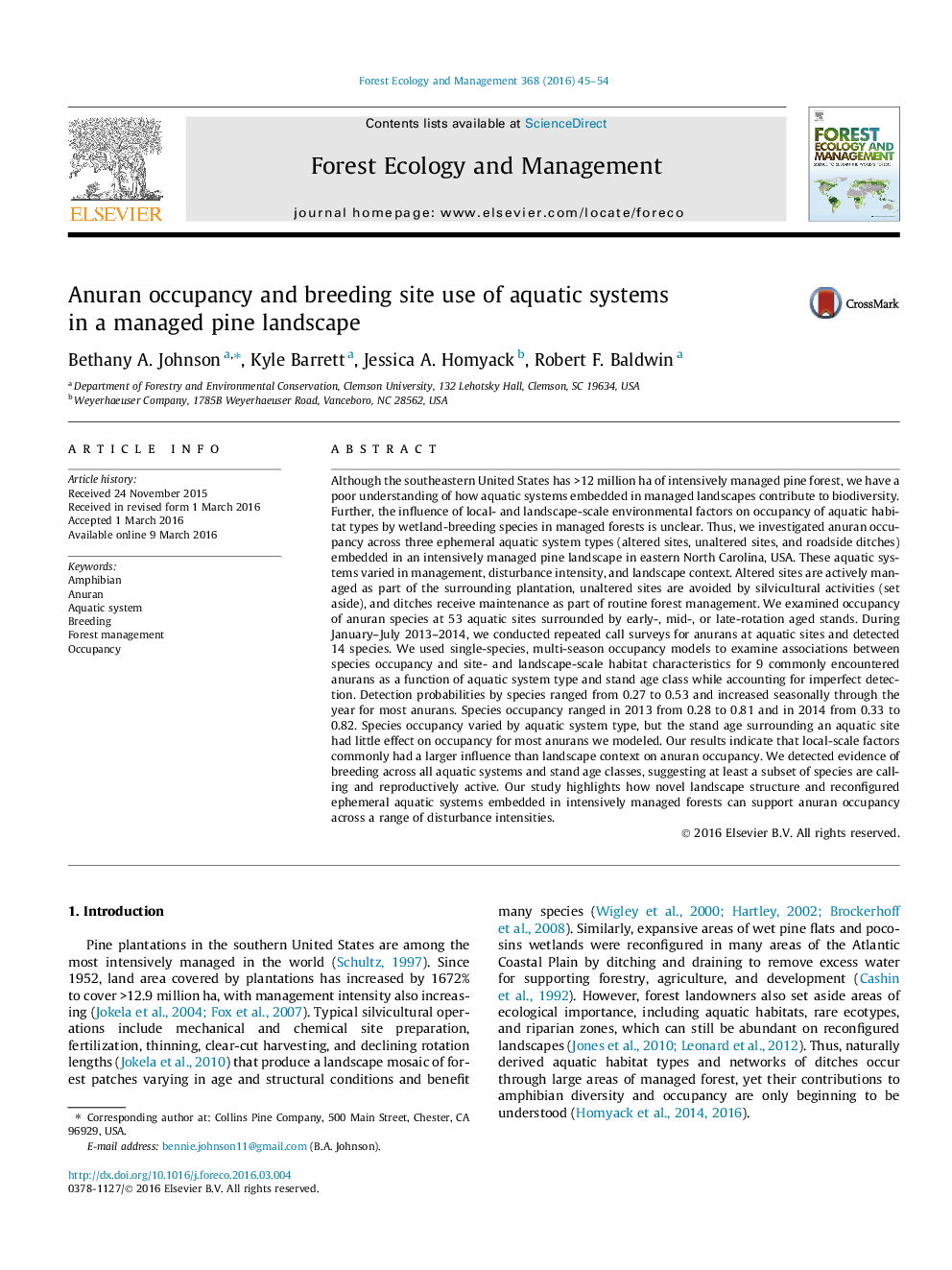| Article ID | Journal | Published Year | Pages | File Type |
|---|---|---|---|---|
| 85949 | Forest Ecology and Management | 2016 | 10 Pages |
•We examined anuran occupancy in aquatic systems embedded in a managed forest.•Aquatic systems varied in intensity of disturbance and stand characteristics.•Occupancy in aquatic systems varied by species.•Stand age surrounding aquatic sites had little effect on occupancy.•Managed forests can support a wide range of anurans.
Although the southeastern United States has >12 million ha of intensively managed pine forest, we have a poor understanding of how aquatic systems embedded in managed landscapes contribute to biodiversity. Further, the influence of local- and landscape-scale environmental factors on occupancy of aquatic habitat types by wetland-breeding species in managed forests is unclear. Thus, we investigated anuran occupancy across three ephemeral aquatic system types (altered sites, unaltered sites, and roadside ditches) embedded in an intensively managed pine landscape in eastern North Carolina, USA. These aquatic systems varied in management, disturbance intensity, and landscape context. Altered sites are actively managed as part of the surrounding plantation, unaltered sites are avoided by silvicultural activities (set aside), and ditches receive maintenance as part of routine forest management. We examined occupancy of anuran species at 53 aquatic sites surrounded by early-, mid-, or late-rotation aged stands. During January–July 2013–2014, we conducted repeated call surveys for anurans at aquatic sites and detected 14 species. We used single-species, multi-season occupancy models to examine associations between species occupancy and site- and landscape-scale habitat characteristics for 9 commonly encountered anurans as a function of aquatic system type and stand age class while accounting for imperfect detection. Detection probabilities by species ranged from 0.27 to 0.53 and increased seasonally through the year for most anurans. Species occupancy ranged in 2013 from 0.28 to 0.81 and in 2014 from 0.33 to 0.82. Species occupancy varied by aquatic system type, but the stand age surrounding an aquatic site had little effect on occupancy for most anurans we modeled. Our results indicate that local-scale factors commonly had a larger influence than landscape context on anuran occupancy. We detected evidence of breeding across all aquatic systems and stand age classes, suggesting at least a subset of species are calling and reproductively active. Our study highlights how novel landscape structure and reconfigured ephemeral aquatic systems embedded in intensively managed forests can support anuran occupancy across a range of disturbance intensities.
